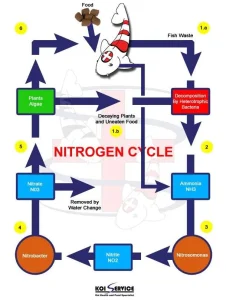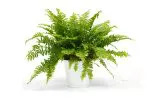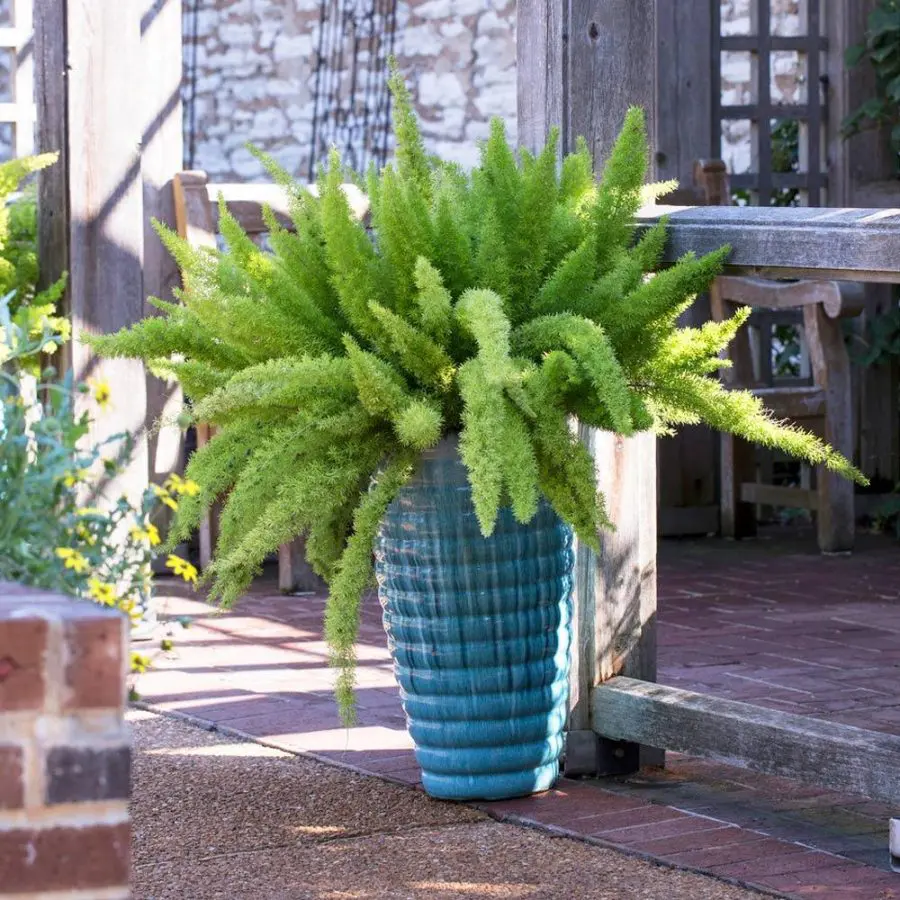This post contains affiliate links. If you buy something from one of our links we may earn a commission. Thanks

Starting a new Koi pond? Beware of New Pond Syndrome! Learn how to avoid and overcome this common issue with our guide to Your Koi Pond And New Pond Syndrome. Keep your fish happy and healthy – dive in now!
New Pond Syndrome: This term refers to the initial imbalances in water chemistry and ecology that often occur in newly established ponds. It can lead to poor water quality, fish stress or death, and increased algae growth. To mitigate this, allow 4-6 weeks for beneficial bacteria to establish and consider adding a bacterial starter kit. Regular water testing is also essential.
Starting a new Koi pond can be an exciting and rewarding experience, but it’s not without its challenges.
Enter New Pond Syndrome – a frustrating issue that can plague even the most diligent pond owners.
Don’t worry though, with our guide to Your Koi Pond And New Pond Syndrome, you’ll be equipped with the knowledge to prevent and overcome this pesky problem. Let’s dive in and ensure your Koi pond thrives!
Protect Your Koi Pond From New Pond Syndrome
Don’t let the fish in your koi pond fall victim to new pond syndrome. New pond syndrome can happen to anyone building a koi pond no matter how well it is designed.
This is a water quality issue associated with newly built koi ponds and this potentially lethal pond problem can only be corrected by Mother Nature herself although we can help the process along and prevent it.
If you’re familiar with keeping an aquarium you may have heard the term new tank syndrome.
When you’re raising koi fish it’s called new pond syndrome. Essentially it’s the same thing only on a much larger scale and you want to avoid it like the plague!
New Pond Syndrome Is Invisible But Lethal To Koi Fish
The scenario goes something like this: Your water is clean and even tests OK but when fish are put in your koi pond they die soon after and seemingly without any obvious cause.
The hidden but very real cause is that the koi pond has not been cycled. Your koi have literally been poisoned by the ammonia in their own excrement. This is what is called new pond syndrome.
Take Your Time Before Introducing Fish To Your Koi Pond And Avoid New Pond Syndrome
It’s easy to get excited and jump the gun on this. Your pond is built, and everything works well and looks good.
You do a water test and it’s perfect. So of course you’re ready to add fish.
But if you do they will most likely fall victim to new pond syndrome and your fish will die on you.
A koi pond must cycle before fish can safely be added. There must be a completed nitrogen cycle before it’s safe.
In case you are not familiar with this, basically what this means is you must grow the right types of bacteria in your koi pond before you add any fish.
Understanding The Nitrogen Cycle
 Koi give off ammonia as does uneaten food. Ammonia is toxic and deadly to koi.
Koi give off ammonia as does uneaten food. Ammonia is toxic and deadly to koi.
But a specialized group of bacteria can eat it and turn it into nitrite. Nitrite is also deadly to koi.
But lucky for us another group of bacteria turns nitrites into nitrate.
Within certain levels, koi can tolerate nitrate although ideally, you don’t want any in your pond.
When you add fish to your koi pond they begin producing ammonia. If the right bacteria are lacking or in low numbers the water quickly becomes toxic and fish die seemingly without cause.
So now we come to a catch-22. Ammonia is deadly to fish but without it, your fish will die. Let me explain.
You need to introduce ammonia to your koi pond in order to start the nitrogen cycle so the bacteria can build up to a level where they can process it.
Then you need to wait for the growth of nitrite-eating bacteria and finally those that eat nitrate.
Starting The Pond Cycle
There are a number of ways to start cycling. In aquariums, it’s customary to add a dead shrimp or use damsel fish to start a cycle. There is no reason to torture a fish though to start the cycle.
Some use unscented household ammonia to start a pond cycle. Basically, any decomposing form of animal protein will work.
I know of people who have urinated in their pond or filter although I really recommend you don’t try this at home.
What will the neighbors think? There are commercial products available to start your pond cycle but I don’t have any experience with using them so can’t say how effective they are.
It can take up to six weeks for a cycle to complete. There’s no hard fast rule as every pond is different.
You can’t rush nature on this. You need to test your water to know what’s going on.
At first, your ammonia will rise. Then gradually it will begin to fall as nitrites begin to rise. Then your nitrites will begin to drop and nitrate will start to rise and then eventually start to drop.
When you have zero ammonia, nitrite and your nitrates test at or near zero as well your pond cycle is complete.
However, you want to add fish slowly or you could overload the system and cause another mini-cycle.
So keep testing your water. Should a spike happen you will need to act fast to save your fish.
The solution to pollution is dilution. Start doing water changes until levels come back down.
So before you add any fish make sure your pond is fully cycled and you will avoid new pond syndrome.
I know it’s easy to get excited about adding fish right after building a koi pond and easy to get impatient waiting for a cycle to complete.
But with a bit of patience new pond syndrome is completely preventable in your koi pond.
More info on new pond syndrome here.
FAQ
Q: How long does new pond syndrome last?
A: New Pond Syndrome can last for several weeks or even months, depending on the size of the pond, the number of fish, and the effectiveness of the filtration system.
It will last until enough beneficial bacteria build up and can convert ammonia and nitrite to nitrate.
Q: How do you treat new pond syndrome?
A: To treat new pond syndrome, it is important to regularly test and monitor water chemistry, maintain proper filtration and aeration, and add beneficial bacteria to the water.
Regular water changes and using dechlorinators can also help prevent and treat New Pond Syndrome.
Q: How long does a new pond take to settle?
A: It can take several weeks or even months for a new pond to settle and for the water chemistry to balance out.
Final Thoughts
In conclusion, New Pond Syndrome is a common problem for new koi pond owners.
It is caused by the build-up of ammonia and nitrite, in the pond water. This can lead to poor water quality, fish stress, and even death.
To prevent New Pond Syndrome, it is important to properly cycle your pond before adding fish, regularly test and monitor water chemistry, and maintain proper filtration and aeration.
Regular water changes, adding beneficial bacteria, and using dechlorinators can also help prevent and treat New Pond Syndrome.
It is important to be patient and give your new pond time to settle.
New Pond Syndrome can last for several weeks or even months, depending on the size of the pond, the number of fish, and the effectiveness of the filtration system.
Read more: Water Gardening for Beginners: 11 Tips For Successful Water Gardens






